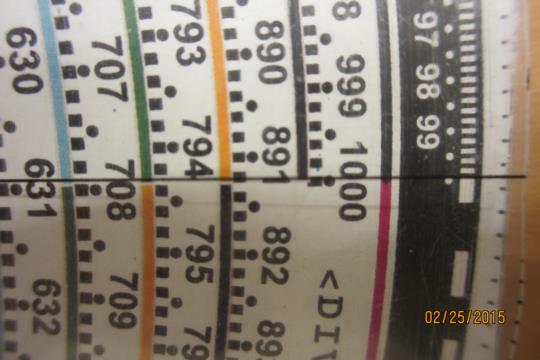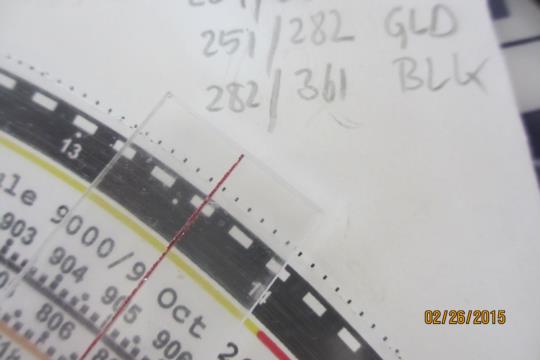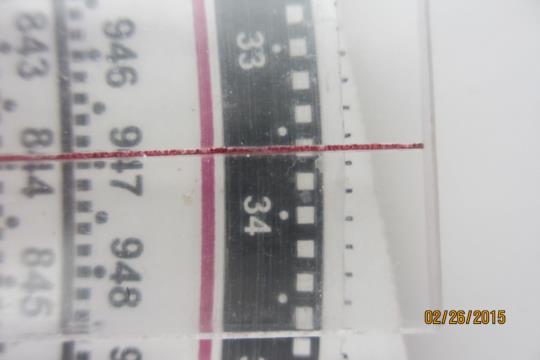
NavList:
A Community Devoted to the Preservation and Practice of Celestial Navigation and Other Methods of Traditional Wayfinding
Re: 4-digit Circular Sliderules
From: Hanno Ix
Date: 2015 Feb 26, 19:01 -0800
The black rim is a circular slide rule all by its own but with just one turn. As such it has 1/20 of the resolution of the inner Circular Slide Rule. Why would one want to have that?
Simple answer: Because on the rim there will be only one place to read the result from, with less resolution however. Remember, there was a 20 fold ambiguity at the inner hi-res scale, and we needed prior knowledge for identifying the location of the true result.
Another answer: sometimes you don't need a 4-digit result so you can use the rim for a faster calculation with ~ 3-digit resolution.
The best answer: you can use both in tandem. Use the rim to find the preliminary result and then refine it in a second step using the inner scale. This was the real intention for having both on the same slide rule.
Example of using the rim slide rule:
AA = 136; BB = 247; find AA*BB
Step I: set the black pointer to 1000. Again the red pointer will move with it, for now at some random angle apart.
Step II: Fix the disk, move the red pointer to factor AA, 136. This will establish and angle between both pointers.
Step III. Release the disk and move it until the black pointer hovers over the factor BB, 247. As you do that the red pointer will move along. But make sure the angle between both pointers established in Step II will not get disturbed while both pointers move during this Step III.
Step IV: Read the result under the red pointer. I read 336. The correct result rounded to 3 digits is in fact 336.
From: Hanno Ix
Date: 2015 Feb 26, 19:01 -0800
2. Usage, part 2
Let me describe here now the usage of the black rim.You notice these are A and B from the first Example I presented in my prior email, rounded to 3 digits. The process is virtually the same:
Step I: set the black pointer to 1000. Again the red pointer will move with it, for now at some random angle apart.
Step II: Fix the disk, move the red pointer to factor AA, 136. This will establish and angle between both pointers.
Step III. Release the disk and move it until the black pointer hovers over the factor BB, 247. As you do that the red pointer will move along. But make sure the angle between both pointers established in Step II will not get disturbed while both pointers move during this Step III.
Step IV: Read the result under the red pointer. I read 336. The correct result rounded to 3 digits is in fact 336.
But that is not all: Please compare the colors of the base lines under A,B, A*B on the inner scale vs. AA,BB, AA*BB on the rim: A, AA yellow. B, BB dark green. A*B, AA*BB magenta. They correspond!
This, then is the reason for having the colors on this slide rule: A preliminary and approximate calculation on the rim will predict by means of the colors the spiral on which the result will be found.
OK, fine. So what is the purpose of SCALE2?
Stand by.
Stand by.
H
_________________________________
_________________________________
PS: the pictures were taken from a prototype so the scales differ slightly from the ones on the published SCALE1.










